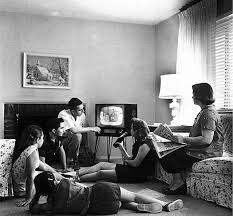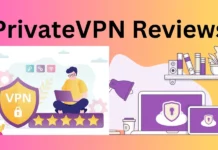Government, public and education accessibility (PEG) channels are an integral part in the industry of cable. They first came into existence in the 1970s, when cable companies were required to reserve channels to be used for local use by the community.
In the beginning, these channels were designed to provide citizens with the possibility of creating their own TV shows on a first-come second-served basis, subject to libel and obscenity laws.
Channel 0
In its debut season, inspired by The creepypasta Candle Cove, The first season of channel Zero was able to establish itself as an intriguing horror anthology. It was able to boast having a single director per episode, which is a rare thing in television, and a distinctive visual style.
Director Nick Antosca had the freedom to explore various horror genres without worrying about keeping the audience interested. The result was a engaging series that kept viewers with a sense of dread. He’s since written for a variety of TV shows, including The Act, which is scheduled to air on Hulu real-life crime thriller The Act.
Channel 1
A number of communities have attempted to force Channel 1 out of their schools However, it’s a difficult fight. Students have requested alternative homes, spoken out during school board meetings and wrote newsletters in opposition to the channel.
The channel also shows two minutes of expertly executed advertisement every day, which is primarily to promote junk foods and games. This isn’t something that anyone would want in the classrooms of their children. Many activists have fought to keep ads off from Channel One for decades. And they may have been successful. The Supreme Court decision has changed the way we view PEG channels.
Channel 2
Public-access TV, also referred to as community access television, is a type of non-commercial mass media that enables individuals to make and broadcast TV programming via cable. It is one of the channels in the system of cable that is accessible for at no cost or for a minimal fee to private non-profit organizations.
The channels are typically operated by the operator of the cable or a designated third-party and offer important equipment and behind the scenes assistance to those who are interested in creating television. They also offer workshops on production and concept. There are a number options are accessible in different countries around the world.
Channel 3
The community-access channels also known as public educational and government (PEG) channels are an example of local media that offers freedom of speech and free expression to local citizens. They usually run television studios and cable channels that are mandated by local government in their franchise agreements with cable companies.
The court concluded that operating the channel does not render the channel a state-owned actor, and is unaffected by First Amendment restrictions. The ruling is a major victory for the public access channel’s users. It will ensure the ability to PEG channels to broadcast controversial programs.
Channel 4
In 1982, when Channel 4 launched in 1982 it was an exciting experiment. The tabloids were thrilled in noting that a small number of viewers were paying attention in late at night; showcased The Tube’s raunchy humor was in stark contrast to BBC2’s more serious traditional programming.
Despite its initial struggles it soon became an entity to reckon with. Documentary programs such as Dispatches and Equinox were praised, and the arts programming benefited from a greater time slot. Comedy was a major part of its mission, too with the brutal comedy Brass Eye caused offence, but was also a huge hit.
Channel 5
The year 1997 saw Channel 5 launched as the last British analogue television channel. It was an official public service broadcaster, and was designed for a diverse spectrum of viewers.
It took a daring approach to programming and proved its willingness to explore established formats. One of the most notable examples was the popular show Family Affairs, which followed the middle-class Hart family as they lived in the suburbs of London suburban Charnham.
In the beginning it was initially, the Channel 5 logo was a transparent cutout of the ‘5’ in the shape of a circle. In February of 2011 it was replaced with a brand new logo launched with an red five in the shape of a cube.
Channel 6
The Community Access Channels, commonly referred to as PEG (public educational, educational as well as public, educational and government), are television production channels and facilities that are required by local governments as a part of the cable franchise agreements. They are uncurated public speech areas that are open to the general public at an affordable cost.
The 1950s, 1960s Channel 6 was a leader in television journalism, establishing the on-site news with a personality format that spread across the United States. The station also produced shows like American Bandstand that helped define the post-war teen culture of the post-war period.
In 2019, a divided U.S. Supreme Court decided that Manhattan Community Access Corporation, an unincorporated company that runs the NYC’s public access channels is not a government entity that is subject to First Amendment constraints.
Channel 7
Channel 7 is a major free-to-air Australian television channel. The exclusive programming it offers includes international editions of a number of reality shows that are popular such as Big Brother, The Voice The Voice, and SAS UK: Who Dares Wins as well as major sporting events such as Supercars and the AFL as well as Supercars.
Channel 7 also offers locally produced Public, Education and Government access (PEG) programming. PEG channels are generally managed by local government agencies or non-profit organisations. They are often called community media. PEG channels usually provide the equipment, expertise and behind-the-scenes support needed by producers for making shows.
Channel 8
Public-access television, also referred to as community media is an informal media that allows free speech. It is comprised of TV production facilities and channels regulated by local government as a in the cable franchise agreements.
The channels that result allow for producers to make noncommercial content and broadcast it on a first come, one-at-a time basis, and are not subject to slander and obscenity laws. Through the years, local access channels have caused controversy and discussion. The channels are currently in an unsteady state.
Channel 9
Channel 9 is Australia’s national television station. It is controlled and owned by Nine and includes GTV Melbourne, TCN Sydney, QTQ Brisbane, NWS Adelaide and WIN Television (serving regional areas) in addition to Macquarie Radio Network. Macquarie Radio Network.
PEG channels, public-access TV, media, as well as PEG channels are the most accessible and grassroots forms of free speech. They offer an array of channels, production facilities for TV and equipment for the general public at no cost or for a nominal cost. This can be a valuable source for communities. GO! can also be a major factor in Nine’s weekly ratings success.















